


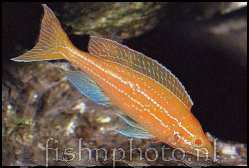
![]() Paracyprichromis
nigripinnisChituta
bay alb.
Paracyprichromis
nigripinnisChituta
bay alb.
![]() Cyprichromis
leptosoma Blue
flash vrouwtje
Cyprichromis
leptosoma Blue
flash vrouwtje
Cyprichromis brieni
![]()
Cyprichrichromis microlepidotus
burundi ![]()
Paracyprichromis nigripinnis Chituta Bay
![]()
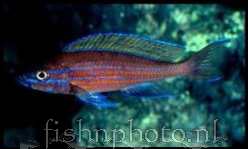
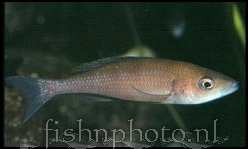
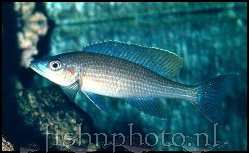
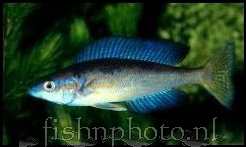
   | ||
| Cyprichromus
en Paracyprichromis 1 | ||
 |
|
|
|
|
|
|
| Scientiffically
seen the sardine cichlids are known quite a lot of years. Namely It was already
in 1898 that BOULENGER described the fish we now know by the name Cyprichromis
leptosoma as Limnochromis leptosoma. Only just in 1977 there was drawn up
an own genus for this cichlids because of their many specific qualities : Cyprichromis
SCHEUERMANN, 1977. Within the scope of a revision of the cichlids of Lake Tanganyika
the Belgian POLL (1986) a subdivision of the Genus Cyprichromis, after
the relative number of Abdominal- and Caudal vertebras as well as the total number
of vertebral bodies, in Cyprichromis sensu stricto and Paracyprichromis.
To the average aquarist the numbers of vertebral bodies don't tell very much.
To him they don't represent a useful distinguishing mark. That is probably why
in literature people are so careless with it and the Aquarius's as well in that
way that both Paracyprichromini often simply are indicated as Cyprichromis.
But besides the inner difference their is also difference in behavior. At the
moment there have been described some seven species, that each are subdivided
in a large number of local varieties, that mostly bear in an addition to the name
the place of origin. Cyprichromis Ieptosoma (BOULENGER, 1898), Cyprichromis leptosoma "Ikola" Cyprichromis leptosoma "Karilani",Cyprichromis leptosoma "Kigoma", Cyprichromis leptosoma "Malasa",Cyprichromis leptosoma "Mpulungu", Cyprichromis leptosoma "Kasanga",Cyprichromis leptosoma "Kiku", Cyprichromis leptosoma "Nangu" Paracyprichromis nigripinnis (BOULENGER, 1901) of which not so very long ago a albinotic variety was created. Cyprichromis microlepidotus (POLL, 1956) Cyprichronis microlepidotus "Bemba", Cyprichronis microlepidotus "Kasai", Cyprichronis microlepidotus "Kavala", Cyprichronis microlepidotus "Kiriza", Cyprichronis microlepidotus "Moba", Cyprichronis microlepidotus "Magara" |
P. brieni (POLL,
1981). |